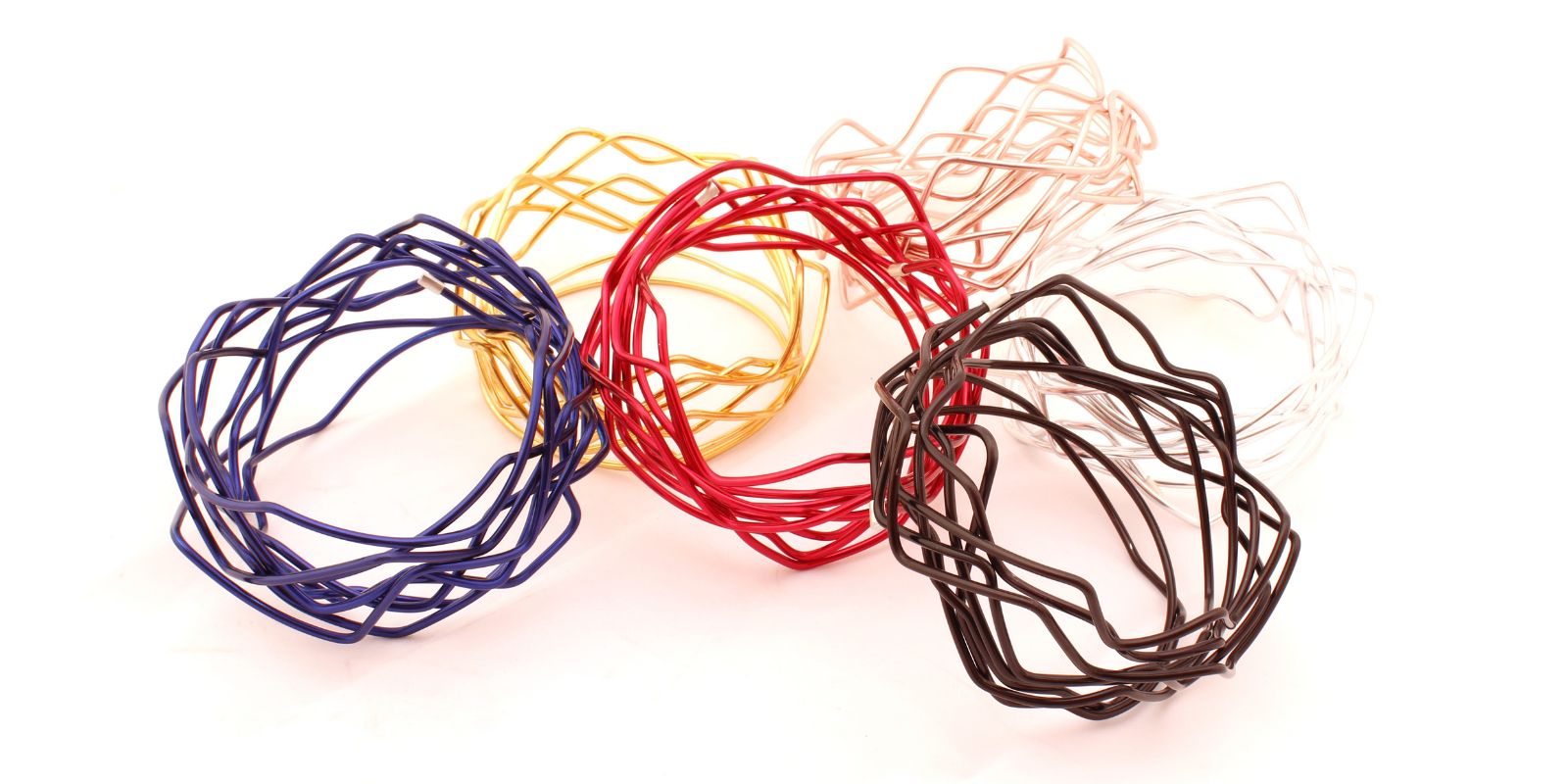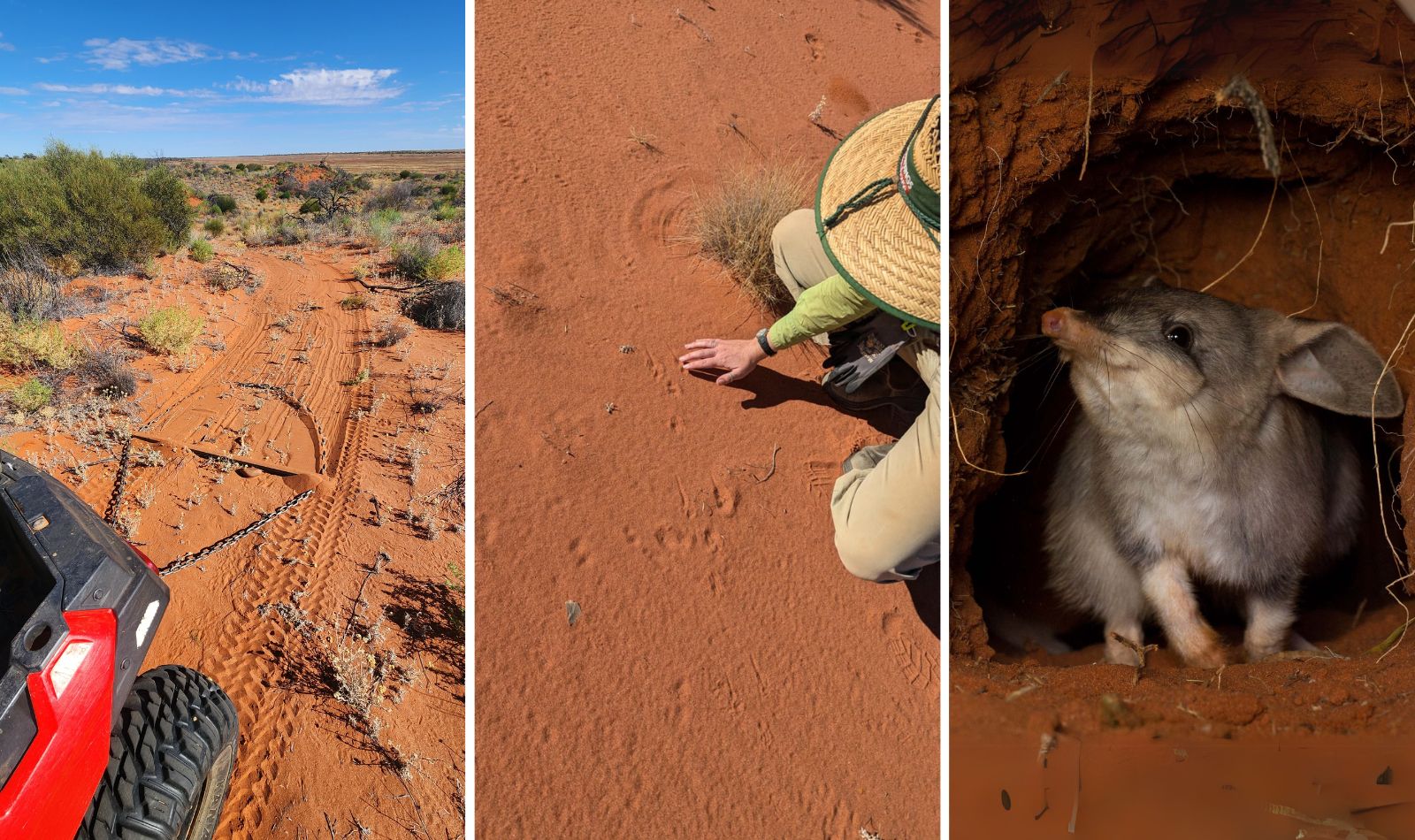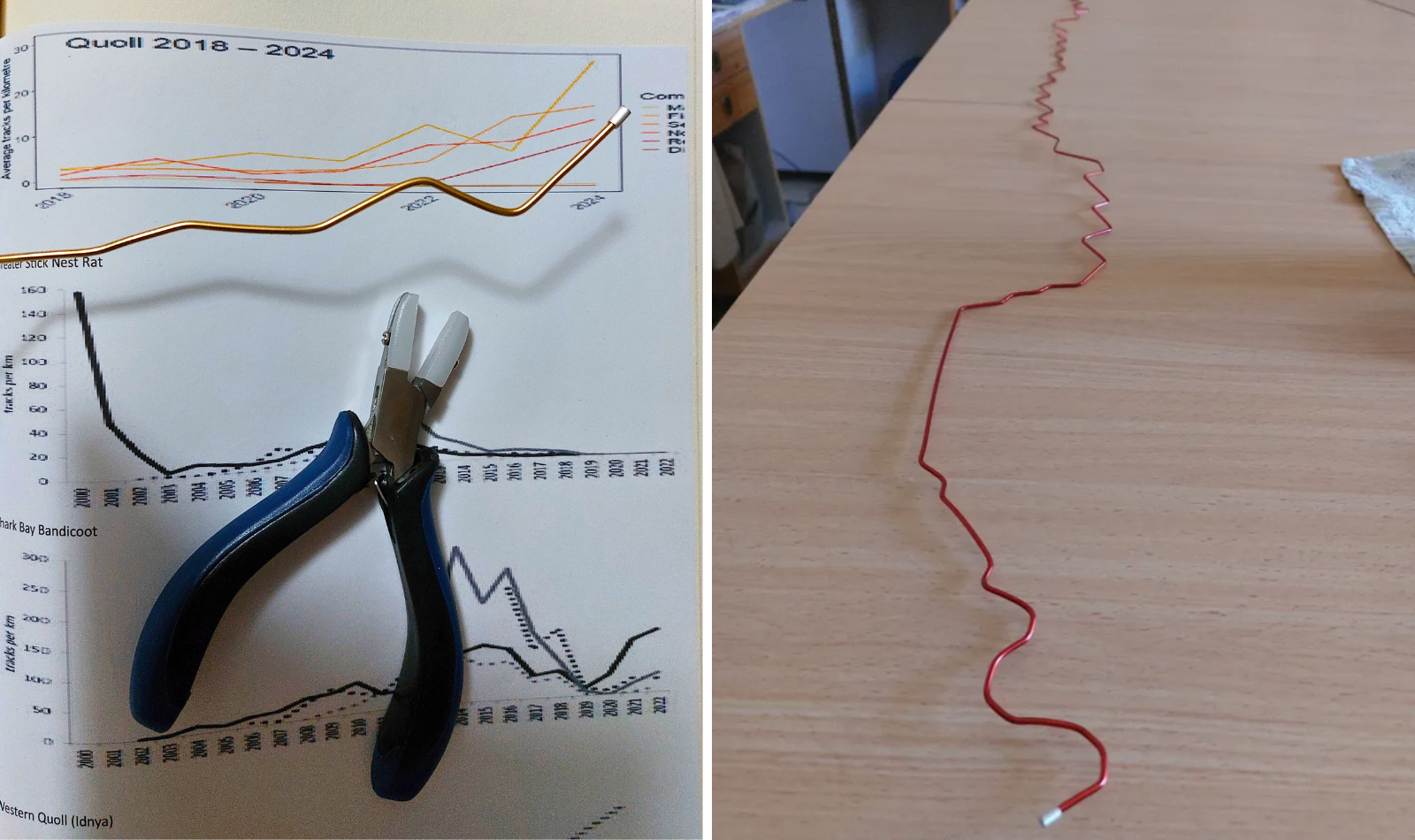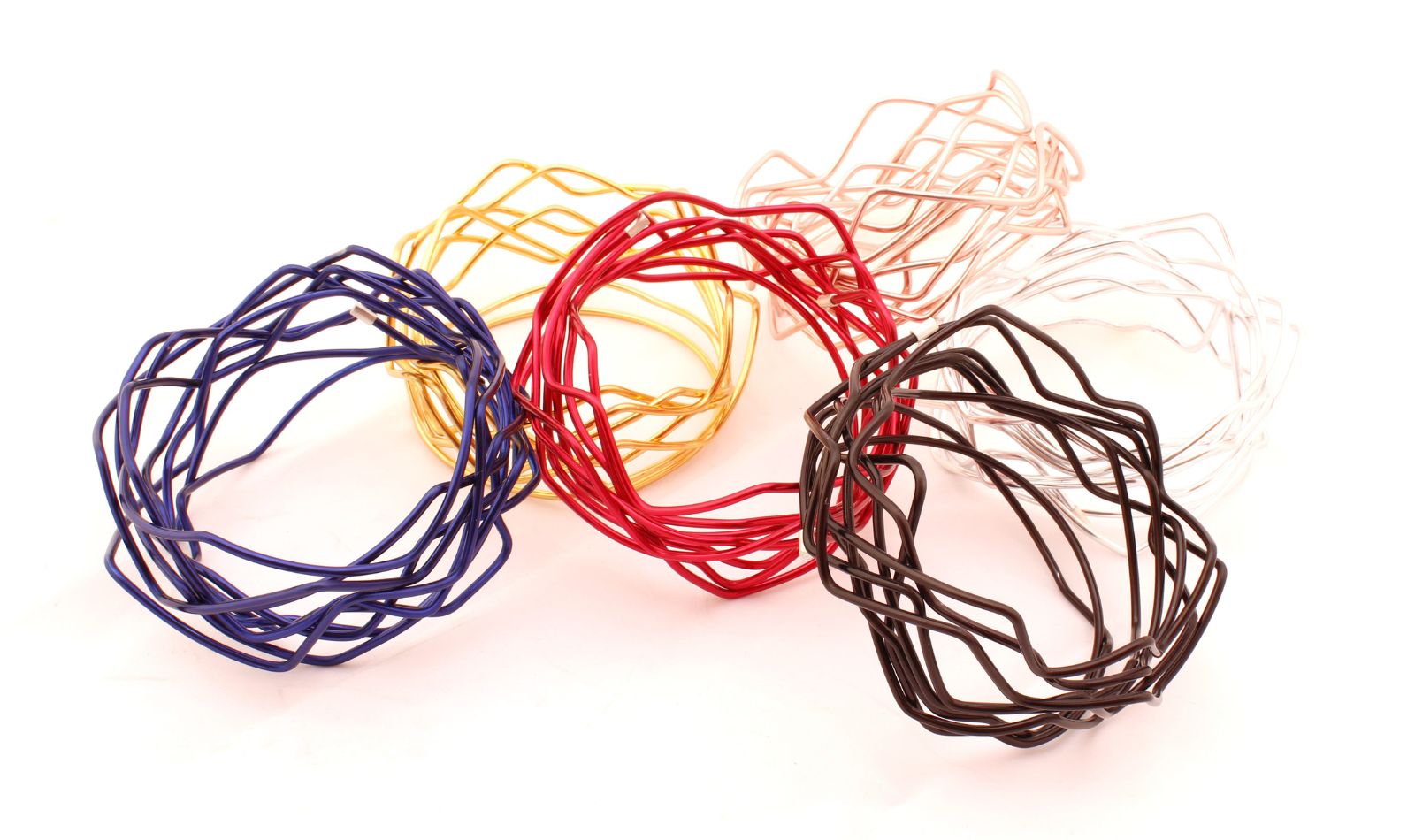Extinction, Reimagined: How jewellery tells the story of Arid Recovery
Arid Recovery and Katherine Grocott
02 June 2025

What happens when you turn 27 years of conservation science into wearable art? In her powerful series Extinction Intervention, artist Katherine Grocott transforms track count data from Arid Recovery into sculptural jewellery that tells the story of extinction, survival, and recovery.
In 2022, artist Katherine Grocott joined Arid Recovery as part of the JamFactory Artist in Residence program. Over two weeks, Katherine immersed herself in life on the Reserve, assisting with fence checks, reintroduced species track counts, feral animal control and stomach content analysis, and learning from Kokatha elders who shared stories of animals that hadn’t been seen in living memory. That experience would go on to shape her most recent body of work: Extinction Intervention.
The jewellery series is based on long-term monitoring data from Arid Recovery’s six reintroduced species: western quoll, burrowing bettong, greater bilby, kowari, Shark Bay bandicoot, and greater stick nest rat. One key source of this data is quarterly track counts. In each paddock, staff drag a single dune using an ATV fitted with a bar that smooths the sand. The next morning, they return to record the footprints of animals that passed through overnight. Each species leaves a unique track, the hopping pattern of a bilby, or the bounding of a bettong. Although the method doesn’t provide exact numbers (especially when you can clearly see that a cheeky bandicoot is running on and off the transect), it offers a reliable index of activity. Over 27 years, these counts have revealed important trends: fewer tracks during drought, the ripple effects of introducing a new predator, or the quiet disappearance of a species once abundant. You can read more about our track count monitoring in Annual Report.
 The sand is smoothed over with a bar attached to an ATV (right), and tracks are identified the next morning (centre). Each track is unique to the animal. The tracks in the middle belong to the bilby (right). Using this data as her foundation, Katherine transforms population trajectories into wearable sculpture. Each bangle is crafted from anodised aluminium wire and sterling silver, shaped to reflect the rise and fall of a species through time.
The sand is smoothed over with a bar attached to an ATV (right), and tracks are identified the next morning (centre). Each track is unique to the animal. The tracks in the middle belong to the bilby (right). Using this data as her foundation, Katherine transforms population trajectories into wearable sculpture. Each bangle is crafted from anodised aluminium wire and sterling silver, shaped to reflect the rise and fall of a species through time.
Each piece follows the same arc:
-
Boom-and-bust fluctuations from the distant past,
-
a sharp decline with the arrival of cats and foxes,
-
a flat line representing local extinction,
-
a a rise, based on Arid Recovery’s actual monitoring data since reintroduction.
 Katherine used Arid Recovery track counts to shape her artwork, shaping the wire on the rise and fall of the trackcounts.
Katherine used Arid Recovery track counts to shape her artwork, shaping the wire on the rise and fall of the trackcounts.
.png?lang=en-AU) Katherine has been an contemporary jewellery artist since 2014.Drought and the over-abundance of other species led to the local extinction of the stick nest rat at the Reserve. In Katherine’s artwork, a long, straight line marks this loss, a visual representation of its disappearance. “It was devastating to hear the stick nest rat had gone extinct in the area again just before we arrived,” Katherine says. “I used black for that one, the colour of mourning”.
Katherine has been an contemporary jewellery artist since 2014.Drought and the over-abundance of other species led to the local extinction of the stick nest rat at the Reserve. In Katherine’s artwork, a long, straight line marks this loss, a visual representation of its disappearance. “It was devastating to hear the stick nest rat had gone extinct in the area again just before we arrived,” Katherine says. “I used black for that one, the colour of mourning”.
For Katherine, the intersection of art and science is powerful. “Art can make science accessible. Sometimes art can expose people to ideas and concepts that they wouldn't normally have access to, but present it in a way that is more than facts and figures. It can move people, change perceptions, educate, and facilitate change of behaviour. Art has a way of making people think”.
At Arid Recovery, the Reserve is a living laboratory where we can push the boundaries of research to achieve better outcomes for endangered species. While science often relies on logic and numbers, creativity is just as important, it’s what allows us to break away from traditional thinking and fuel innovation. As Katherine put it, “art and creativity can push scientific pursuits. Creative thinking is essential for science. Without it, many solutions to problems would not be dreamed up. Often thinking outside the box is what leads to scientific breakthroughs”.
Although a planned exhibition of the pieces in Roxby Downs didn’t eventuate, Katherine never forgot her time at Arid Recovery. “I think about it quite a lot. Even today, walking through the Adelaide parklands, I found tracks in the sand and stopped, wondering what animal made them”.
You can explore Katherine’s work here
 Each bracelet represents one of the reintroduced animals at Arid Recovery. Blue = kowari, gold = western quoll, cherry = Shark Bay bandicoot, rose gold = burrowing bettong, silver = greater bilby, and black = greater stick nest rat.
Each bracelet represents one of the reintroduced animals at Arid Recovery. Blue = kowari, gold = western quoll, cherry = Shark Bay bandicoot, rose gold = burrowing bettong, silver = greater bilby, and black = greater stick nest rat.
Images: K. Grocott, J. Vink